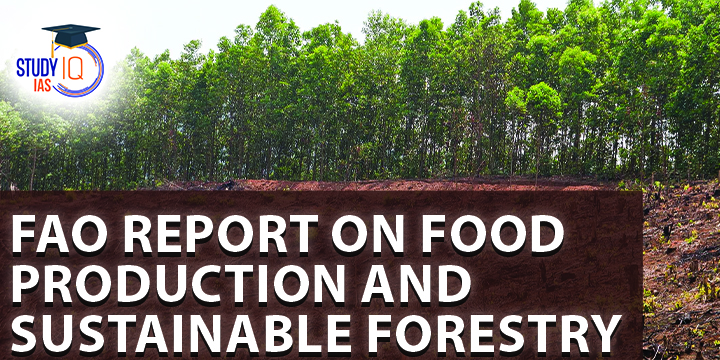Table of Contents
The Food and Agriculture Organization (FAO)
- The Food and Agriculture Organization (FAO) is a specialized agency of the United Nations that leads international efforts to defeat hunger and improve nutrition and food security.
- World Food Day is celebrated every year on 16th October to mark the anniversary of the founding of the Food and Agriculture Organization (FAO) in 1945.
- Headquarters: Rome, Italy.
- Members: The Food and Agriculture Organization (FAO) is composed of 195 members (including 194 countries and the European Union).
- Key publications of Food and Agriculture Organization (FAO):
- The State of the World’s Forests (SOFO)
- The State of Food Security and Nutrition in the World (SOFI)
- World Food Price Index
- The State of World Fisheries and Aquaculture (SOFIA)
- The State of Food and Agriculture (SOFA)
- The State of Agricultural Commodity Markets (SOCO)
Food and Agriculture Organization (FAO): Major Highlights
Food Production
- Food demand to support the global population will be 50 per cent more in 2050 compared with 2012.
- Food production will need 165 to 600 million more hectares of land for crop and livestock production, much of which is currently covered by forests and other critical ecosystems.
- The yield increases alone would be insufficient to meet demand and must be paired with other interventions. These include restoration of degraded land, forest protection and improved governance to ensure an increase in food security without drastically diminishing forest cover.
Deforestation
- The world has lost 420 million hectares of forests in the last two decades, as per FAO’s Global Forest Resources Assessment 2022.
- It is vital to slow the rate of deforestation — standing at 8.8 million hectare per year from 2010-2018. It stood at 11 million ha per year from 2000-2010.
- From 2000-2018, almost 90 per cent of deforestation globally was attributable to agricultural expansion. This negatively impacts associated ecosystem services such as carbon sequestration and biodiversity.
Food and Agriculture Organization (FAO): Key Recommendations
‘Forest Positive’ Food Production
- There is an urgent need to build sustainable global agrifood systems based on the synergies between agriculture and forests that provide a win-win outcome for both sectors.
- Governments need to create conditions for farmers to change their practices to maximize production while minimizing the impact on forests and biodiversity.
- Governments must pay special attention to smallholder farmers, who produce roughly 35% of the world’s food, but often live in poverty and cannot afford the costs or interruptions to income incurred through changing the way they work.
- Moving to a more sustainable approach to food production will increase agricultural production in coming years while also helping to meet the globally agreed 2030 target for ending deforestation.
Restoring the Degraded Land
- Landscape planners and decision-makers should consider livestock as part of the solution.
- Properly integrated livestock grazing can play a vital role in restoring degraded land with trees, halting desertification and improving wildfire prevention in drylands.
- Silvopastrolism (which combines animal grazing and trees) has the potential to create alternate livelihoods and also help enhance local communities’ food security and income by preventing land degradation.
- At the same time, grazing livestock helps control vegetation, reduce the risk of wildfires, accelerate nutrient cycles and improve soil fertility.
Food and Agriculture Organization (FAO): Significance of Dry Lands
- Drylands are home to about 25 per cent of the global population, contain 50 per cent of the world’s livestock, 27 per cent of the world’s forests and are where about 60 per cent of the world’s food production takes place, stated the Food and Agriculture Organization (FAO).
- Woody plants in drylands provide animal feed, timber and fruit as well as help to increase biodiversity and regulate soil and water cycles.


 Daily Quiz 01 July 2025
Daily Quiz 01 July 2025
 China, Pakistan and Bangladesh Trilatera...
China, Pakistan and Bangladesh Trilatera...
 US Pulls Funding from GAVI-Global Vaccin...
US Pulls Funding from GAVI-Global Vaccin...





















